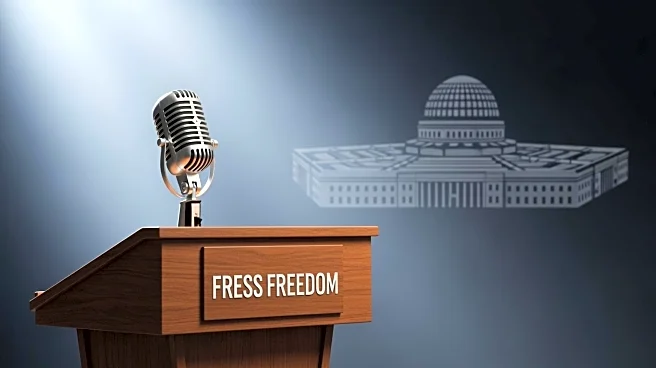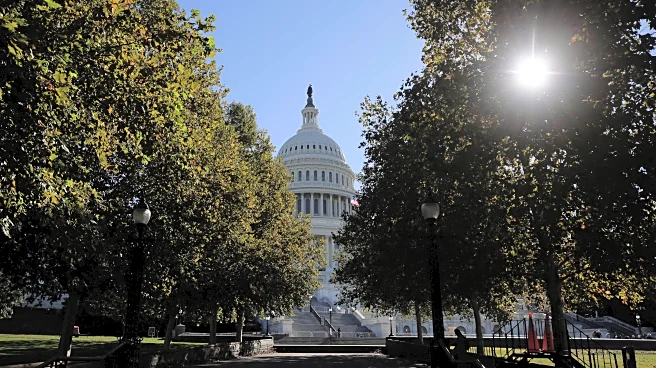What's Happening?
The Interior Department has announced plans to eliminate more than 2,000 positions across its headquarters, agencies, and bureaus nationwide. This reduction in force (RIF) is part of a broader effort to streamline
functions and personnel, aligning with administration priorities since January 2025. The planned cuts, which are not related to the ongoing government shutdown, were revealed in a court filing amid a union lawsuit challenging the Trump administration's workforce reduction efforts. The RIF would impact various bureaus, including the Bureau of Land Management, Fish and Wildlife Service, and National Park Service, among others. However, a temporary restraining order issued by a federal judge currently protects these positions, preventing immediate layoffs.
Why It's Important?
The planned workforce reduction by the Interior Department could have significant implications for U.S. public lands and scientific research. The cuts would affect critical areas such as the National Park Service and the U.S. Geological Survey, potentially undermining scientific research and conservation efforts. The reduction in staff could lead to decreased efficiency in managing public lands and hinder the department's ability to fulfill its mission. Stakeholders, including environmental advocacy groups, have expressed concern over the potential impact on scientific research and public land management, highlighting the importance of these roles in supporting American energy, insurance, and transportation sectors.
What's Next?
The Interior Department's workforce reduction plans are currently on hold due to a temporary restraining order. The legal challenge brought by unions, including the American Federation of Government Employees, aims to protect federal employees from layoffs during the government shutdown. As the case progresses, the department may need to reassess its plans and consider alternative strategies for achieving its streamlining goals. The outcome of the legal proceedings will likely influence the department's ability to implement the planned cuts and could set a precedent for future workforce reductions in federal agencies.
Beyond the Headlines
The Interior Department's workforce reduction plans raise broader questions about the balance between efficiency and the preservation of essential services. The potential impact on scientific research and public land management highlights the ethical considerations of prioritizing budget cuts over environmental and societal benefits. The legal challenge underscores the role of unions in advocating for employee rights and the importance of judicial oversight in government actions. This situation may prompt discussions on the long-term implications of workforce reductions in federal agencies and their effect on public services.












